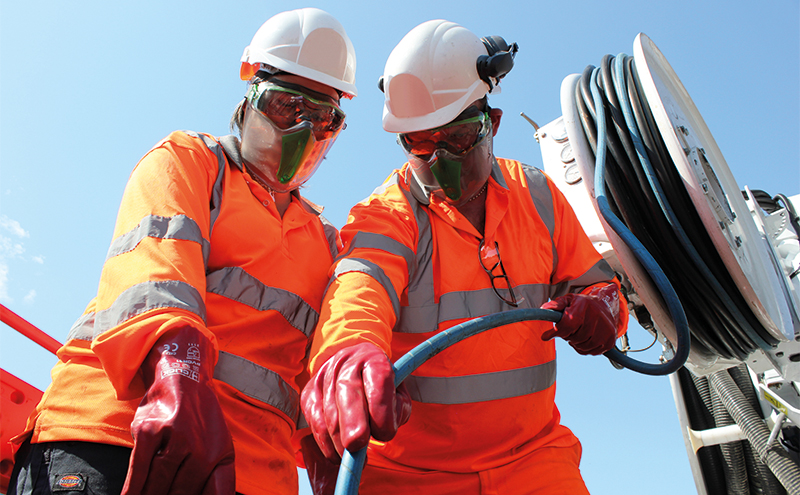
NO-dig remote access services delivered by drainage specialists are increasingly valued by construction contractors – and a key component is said to be water jetting.
The Water Jetting Association (WJA) claims innovations in equipment and its application are “pushing back what is possible” with water jetting.
The WJA said carrying out CCTV drainage surveys, for asset maintenance or as part of a pre-adoption due-diligence process, is only possible in conjunction with water jetting.
It is also fundamental to rehabilitation of drains and sewers through pipe lining, a process increasingly favoured over excavation and replacement due to time and cost savings, plus safety and sustainability.
David Kennedy, WJA director said, “Water jetting is used increasingly in construction, and not just for drainage. What remains fundamental is the safe application of water jetting technology. At the heart of this is safety awareness and skills development through effective training.”
Standard drain and sewer water jetting uses water at up to 3,000 pounds per square inch (PSI). The WJA added that this is adequate for clearing underground pipes of silt and other loose debris, for example in conjunction with carrying out a CCTV drainage survey.
At this pressure, if not properly controlled, the hand-held jetting hoses are capable of causing injury to the operative, or someone standing nearby. For more specialist tasks water jetting pressures can be much higher. For example, for removing concrete in pipes, high pressure jetting may be necessary. Operating pressures of 15,000 PSI are common.
Where hydrodemolition is carried out, involving the large-scale cutting of concrete, stone or metal, water jetting can reach ultra-high pressures – up to 43,500 PSI.
The WJA provides water jetting training, delivered by WJA registered training provider companies using approved instructors.
David Kennedy added, “Most well-established construction contractors have good systems in place for ensuring their subcontractors have the capabilities needed to carry out their work.
“For water jetting, the WJA argues, the starting point should be that all operatives have been formally trained to be aware of the safety implications of the technology they are using. Preferably, they should also have had been trained in the specialist water jetting services they are being hired to provide.
“Experience is also important, but training by skilled and qualified instructors is vital.”
WJA includes a one-day class-based safety awareness course, that introduces delegates to the principles of water jetting, types of equipment and key safety issues and techniques.
There are also a range of further practical courses with topics that include drain and sewer cleaning, pressure washing, tube and pipe cleaning, hydrodemolition, and surface preparation.








